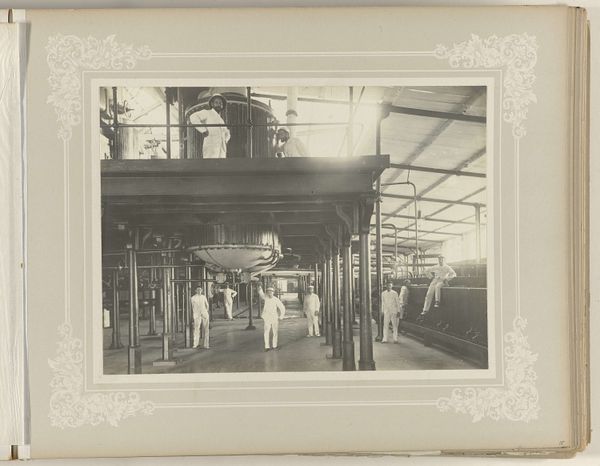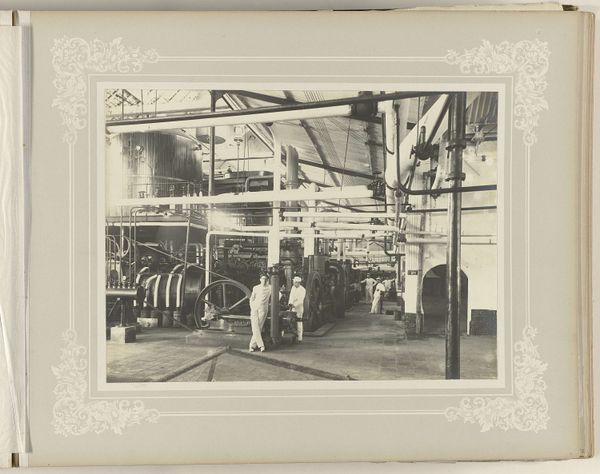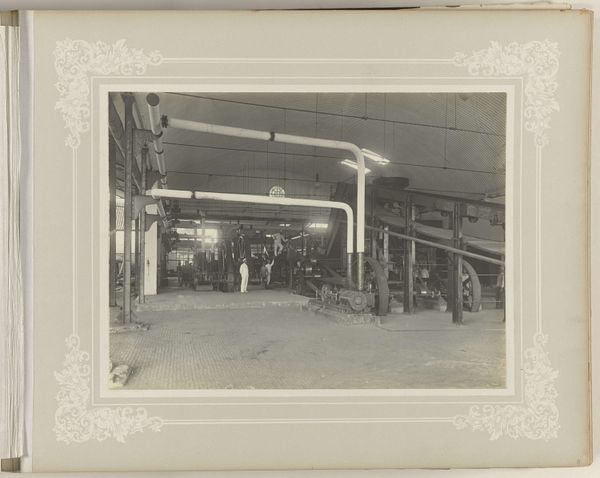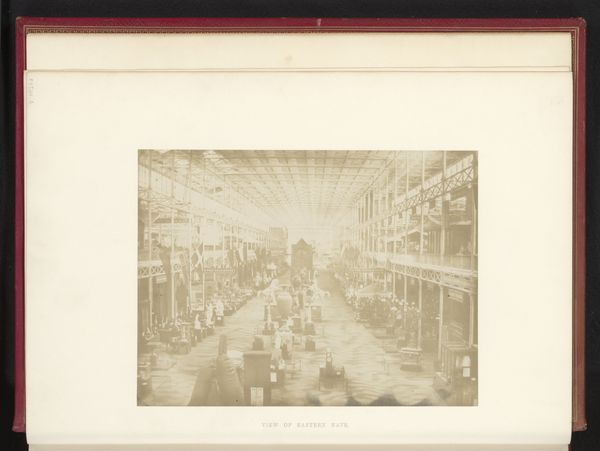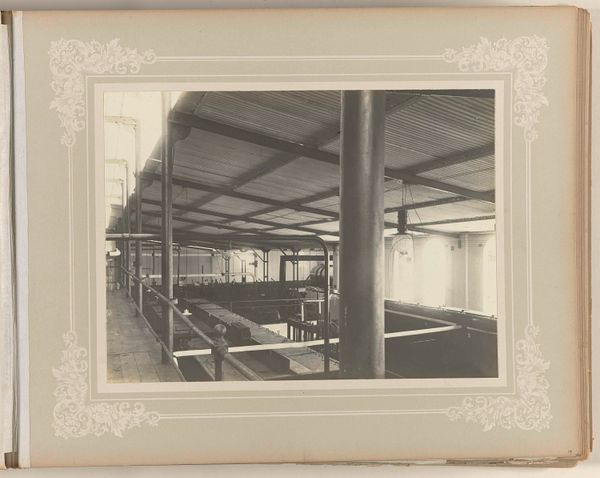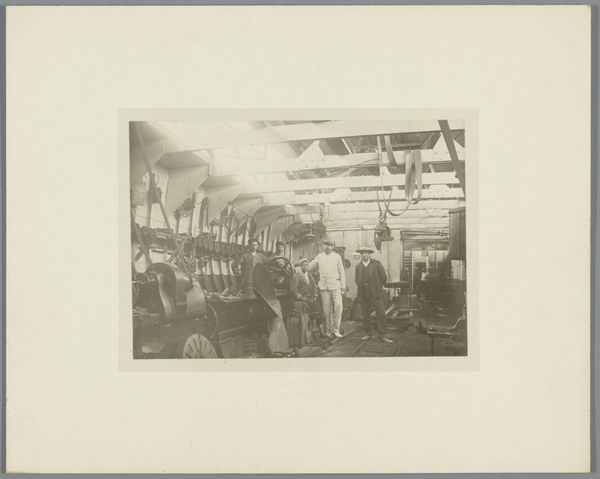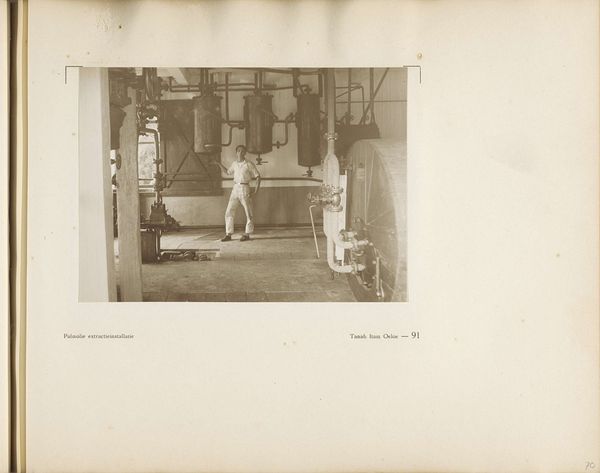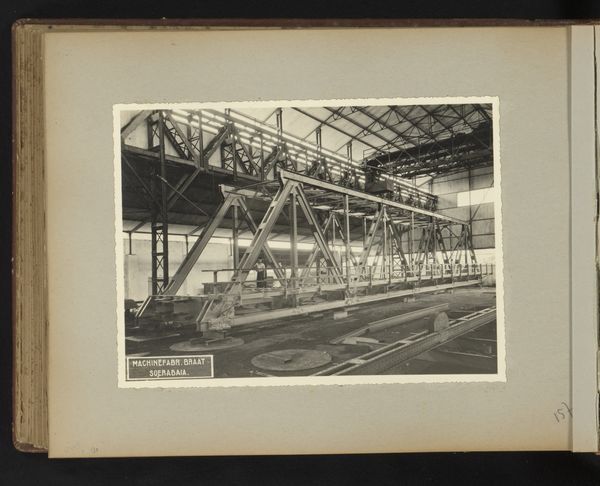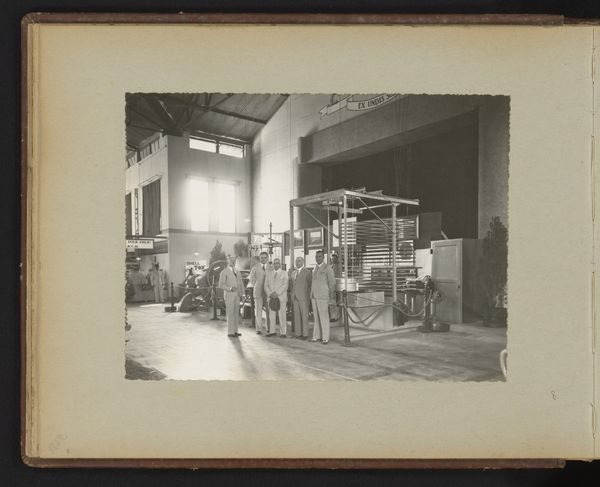
photography, gelatin-silver-print
#
photography
#
gelatin-silver-print
#
genre-painting
#
realism
Dimensions: height 170 mm, width 230 mm
Copyright: Rijks Museum: Open Domain
Editor: This photograph, "Opzichters in de machinehal in de suikerfabriek," by Otto Hisgen, made with a gelatin-silver print somewhere between 1890 and 1910, has this strangely sterile feel to it. The workers in their white uniforms almost blend into the machinery. What do you see when you look at this piece? Curator: It's fascinating, isn't it? On one level, it's a seemingly straightforward genre scene, typical of its time, documenting industrial progress through a Realist lens. But I'm more drawn to what it subtly reveals about labor, class, and power. The white uniforms, for example, were likely a form of control, a visual marker of status but also subservience within a brutal work environment. Editor: That's interesting! I hadn't thought of the uniforms as a control mechanism. It made me think about who even owned sugar plantations then, how far away, and the historical implications for those that could never afford refined sugar at the time, such as the working classes and enslaved peoples around the globe. Curator: Exactly! And that context shifts the narrative from one of industrial progress to one of social injustice and global capitalism. Who benefits from this pristine factory floor, and at what cost? The photographic genre played a huge role in colonialism because it served as propaganda to those who did not fully understand plantation hierarchies. Editor: That makes the photograph much more complicated, even unsettling. So what looks like a simple depiction of labor, hides other dimensions. Curator: Precisely. This work exemplifies how art can act as a catalyst for dialogue, prompting us to critically examine the world and the social constructs within it. Even the factory halls serve as spaces where hierarchies and historical oppressions were reinforced. Editor: I'll never look at a photograph the same way. Curator: That is precisely the point!
Comments
No comments
Be the first to comment and join the conversation on the ultimate creative platform.
